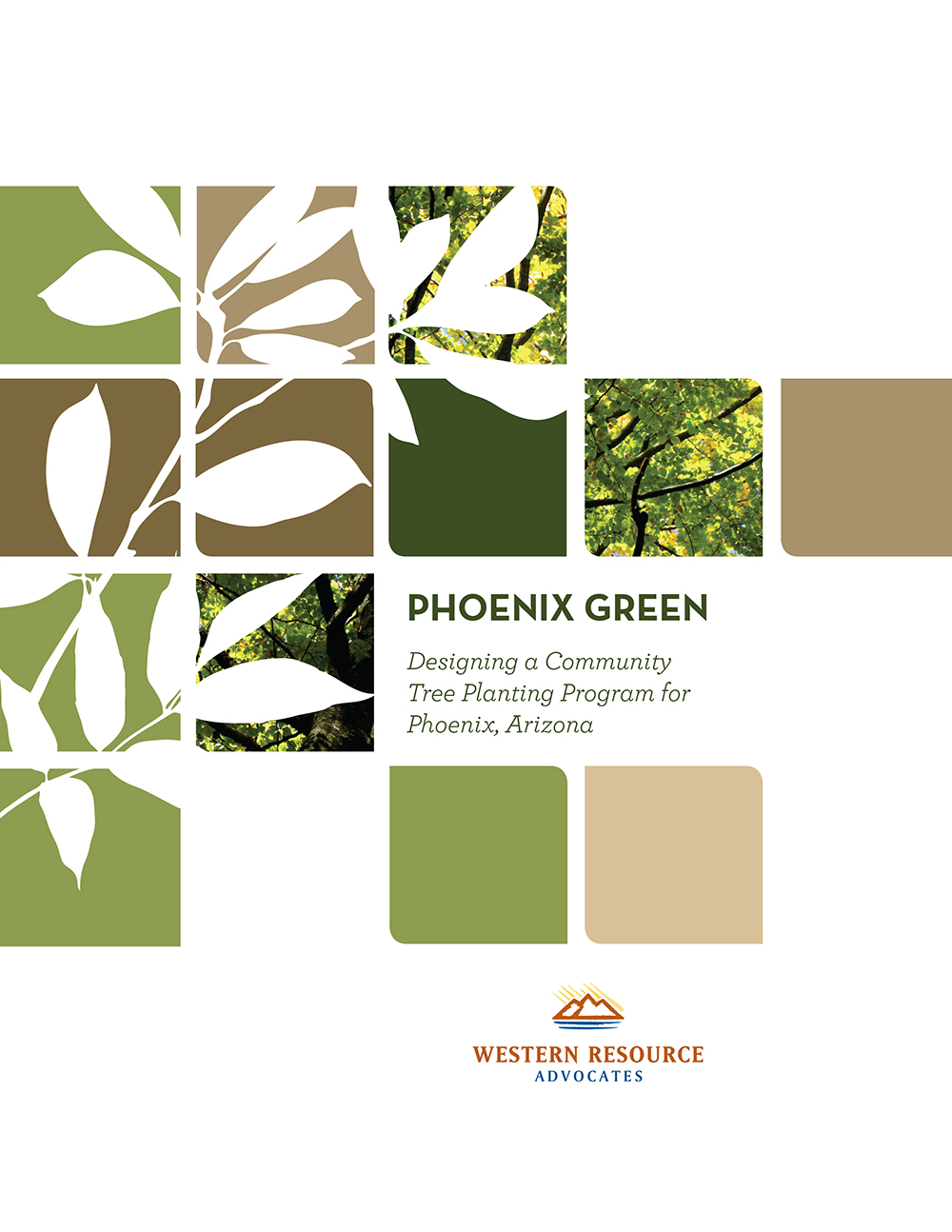
Phoenix Green: Designing a Community Tree Planting Program for Phoenix, Arizona
Shade trees aren’t just an aesthetic landscaping choice they are also an effective way to reduce energy demands in the sunny Southwest. This report prescribes a tree planting program for Phoenix, Arizona that can effectively reduce energy demand, increase quality of life, and serve as a template for other communities wishing to reduce their summer cooling energy loads. Phoenix is one of the largest metropolitan areas in the country and has a huge demand for air conditioning because of its very high summer temperatures yet the area has a meager tree canpoy. Electric utilities serving the Phoenix area must obtain hundreds of megawatts of additional power generation capacity every few years to run air conditioners. For each 10,000 shade trees planted in the Phoenix area, carbon dioxide emissions from power plants would decline by about 15,000 metric tons over a 30-year period.
Taking into account growth rates and survival rates, planting 10,000 shade trees at residential sites in the Phoenix area each year for 10 years would result in annual savings of about 14,000 megawatt hours (MWh) after the trees mature. Planting trees can also help achieve other goals, such as restoring or improving habitat, increasing public participation in neighborhood issues, improving the appearance of streets, improving walkability along sidewalks and trails, and sequestering carbon dioxide.
Obtaining the energy savings and other benefits from shade trees requires a well-organized effort. To date, the Phoenix area has lacked a large-scale community tree planting organization. This report draws on the experience of 24 community tree planting organizations to provide a framework for designing and operating a sustained tree planting effort in Phoenix.

